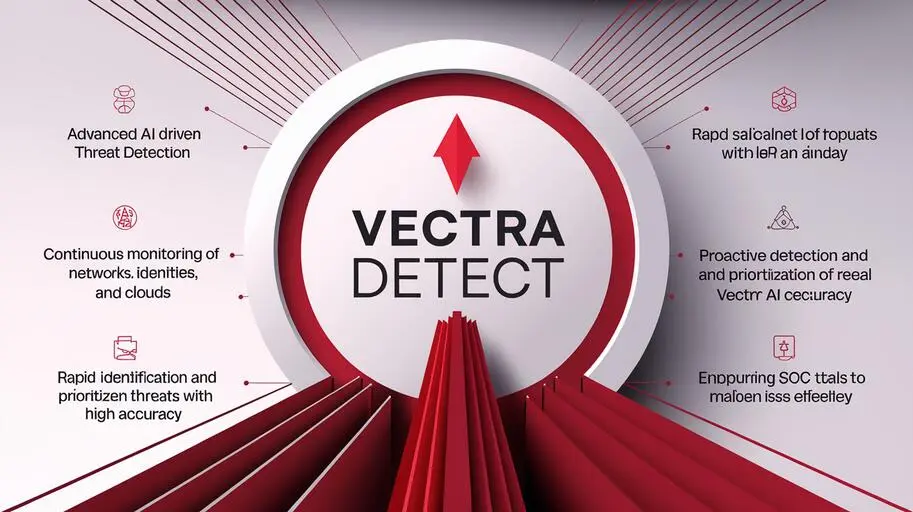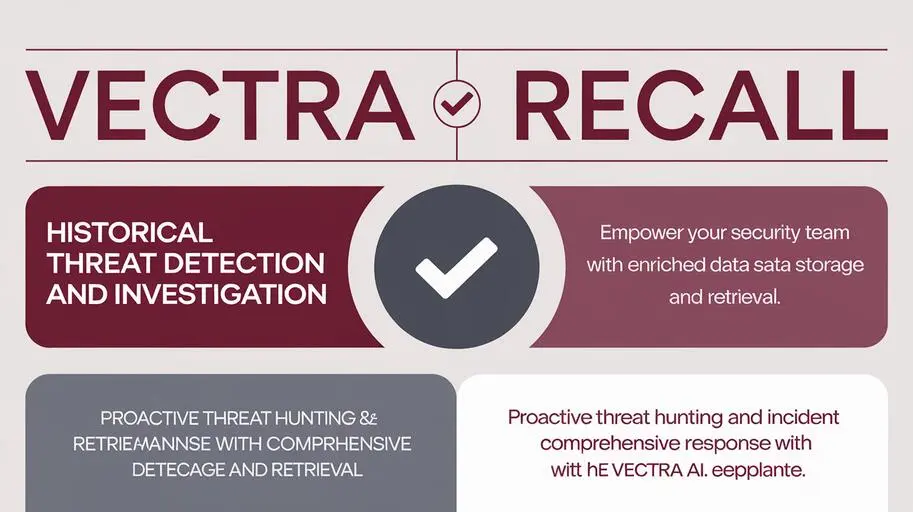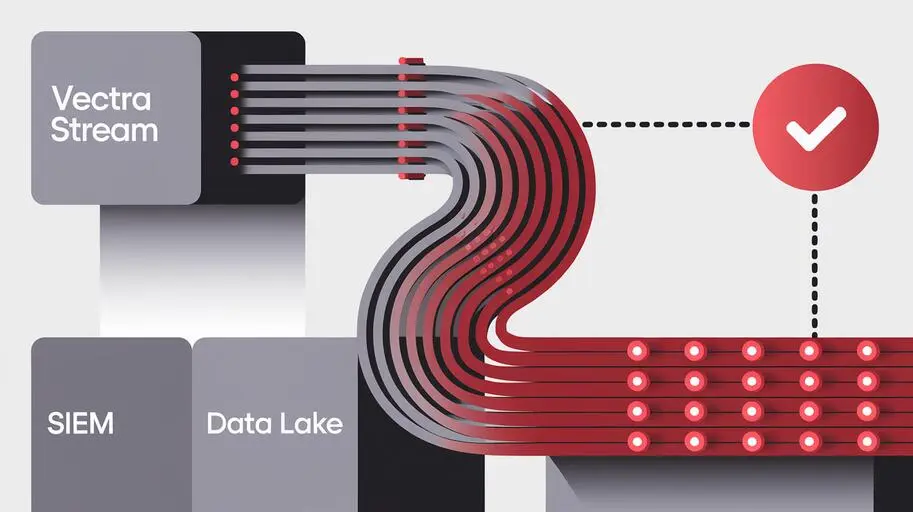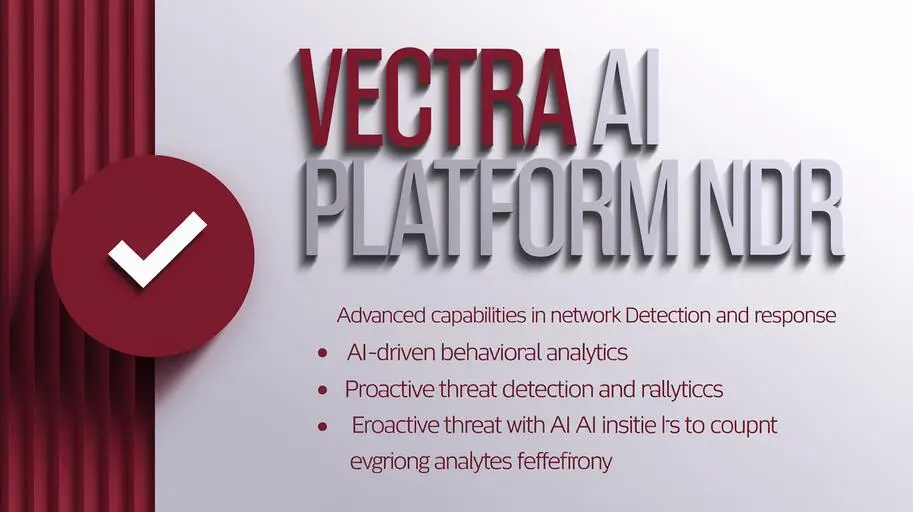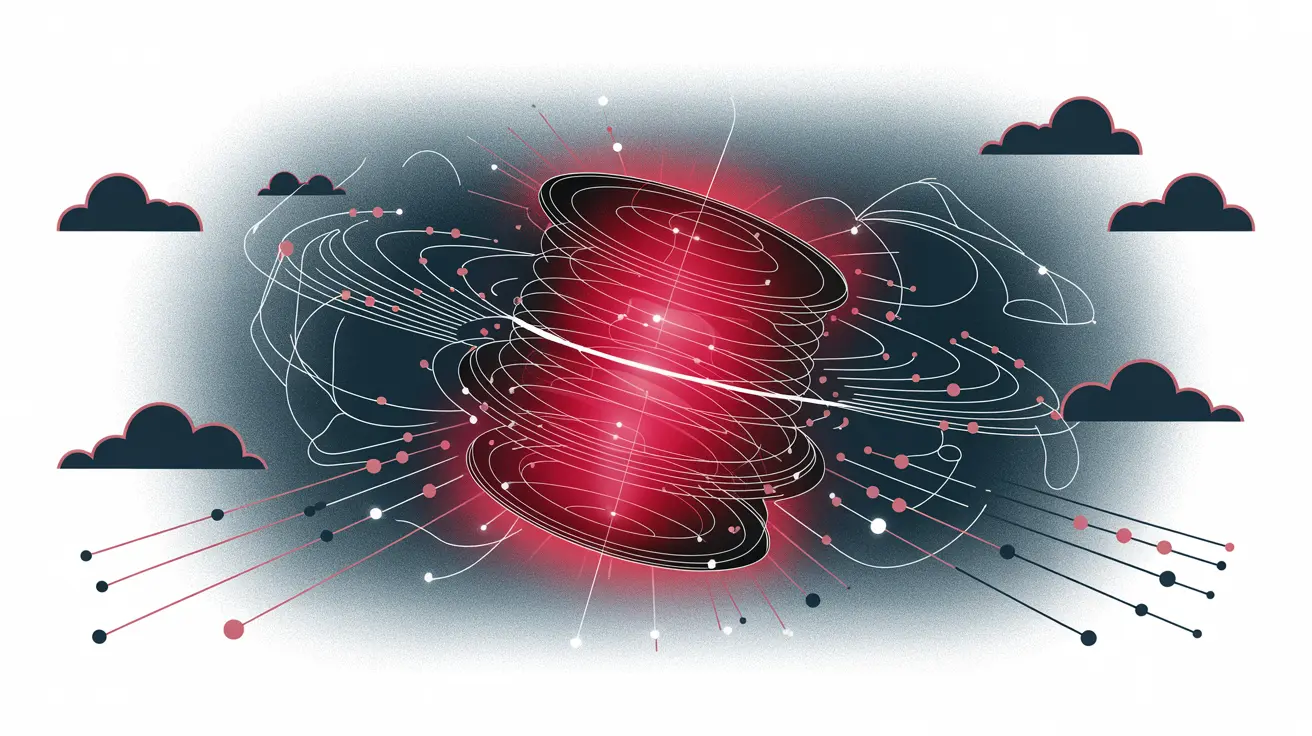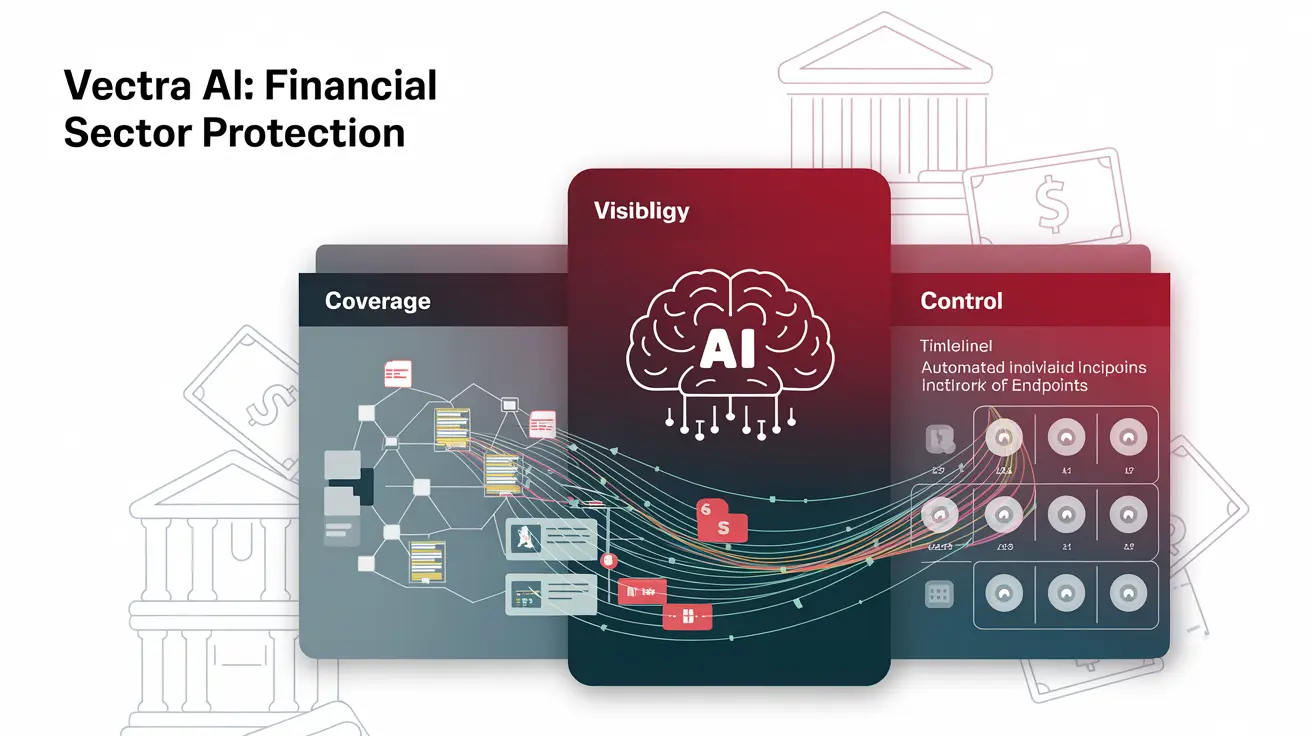
In today’s dynamic cybersecurity landscape, where hybrid threats and complex attacks are increasingly common, traditional protection methods often fall short. In response to these challenges, Vectra AI, a recognized leader in AI-driven threat detection and response in hybrid cloud environments, has taken a significant step forward by introducing a new key capability: Vectra Match.
Vectra Match integrates and delivers the context of intrusion detection system (IDS) signatures directly into the Vectra Network Detection and Response (NDR) platform. This allows security professionals to significantly accelerate their transition to intelligent, AI-powered threat detection and effective response, without sacrificing valuable investments already made in signature-based protection mechanisms. This creates a powerful synergistic effect, combining time-tested methods with cutting-edge AI technologies for comprehensive protection.
Integrating Signatures and AI: The Vectra Match Solution
As Kevin Kennedy, Senior Vice President of Products at Vectra, noted: “As enterprises transform, embracing digital identity, supply chains, and complex ecosystems, GRC (governance, risk, and compliance) and SOC (security operations center) teams are forced to keep pace. Keeping up with existing, evolving, and emerging cyber threats requires visibility, context, and control for both known and unknown threats. The challenge for many security organizations is to do this without added complexity and cost. Vectra NDR now allows security teams to combine signatures for known threats and AI-powered behavioral detection of unknown threats into a single, unified solution.”
This quote highlights a fundamental shift in cybersecurity approaches: instead of disparate tools working in isolation, a comprehensive solution is needed to combine various detection methods for maximum effectiveness.
Benefits of Vectra Match for GRC and SOC
With the advent of Vectra Match, the Vectra NDR platform effectively addresses key use cases for GRC and SOC teams, providing significantly higher efficiency in the following areas:
- Correlation and verification of threat signal accuracy: By integrating signature context, Vectra Match allows the NDR system to aggregate and correlate data from various sources. This not only reduces the number of false positives, which are a major pain point for analysts, but also significantly increases the accuracy of real attack detection. The synergy of signature analysis and AI-driven behavioral detection provides a more complete and reliable picture of events.
- Compliance for network CVE detection with compensating controls: Ensuring regulatory compliance is critical for any organization. Vectra Match enables the detection of network vulnerabilities (CVEs) and provides necessary compensating controls, which helps organizations not only adhere to security standards (e.g., NIST, ISO 27001) but also actively respond to known threats, even if patches have not yet been applied. This is especially important when critical vulnerabilities, such as the infamous Log4J, are discovered.
- Optimization of threat hunting, investigation, and incident response processes: Thanks to the improved context and automation provided by Vectra Match’s integration into NDR, SOC teams can significantly reduce the time required to analyze and eliminate threats. According to the IBM “Cost of a Data Breach Report 2023,” the average time to detect a breach was 204 days, and the average containment time was 73 days. Solutions like Vectra Match are designed to significantly reduce these metrics, transforming passive reaction into active and proactive defense.
NDR Market Trends and Vectra AI’s Role
According to recent research by Gartner®, the Network Detection and Response (NDR) market shows a clear trend towards expanding functionality. Many NDR offerings now include capabilities to capture new categories of events and analyze additional traffic patterns. This encompasses new detection methods, such as support for traditional signatures, performance monitoring, advanced threat analysis, and even malware detection mechanisms. This shift towards more multi-functional detection aligns perfectly with the network/security operations convergence use cases, as well as the needs of mid-sized enterprises (according to the Gartner Market Guide for Network Detection and Response, 2024).
These trends confirm the strategic value of Vectra Match, which allows organizations to maximize their existing investments in signatures while implementing advanced AI-driven detection capabilities. Such a hybrid approach is particularly important as the attack surface continues to grow exponentially, complicating the task of defense.
Expert Opinions on the Importance of Vectra Match
Leading industry experts confirm the critical importance of the integrated approach offered by Vectra Match.
Ronald Heil, Head of Global Risk Consulting for Energy & Natural Resources and Partner at KPMG Netherlands, emphasizes: “The attack surface available to cyber attackers continues to grow exponentially, creating unknown threats in addition to tens of thousands of known existing vulnerabilities. Attackers simply have exponentially more ways to penetrate an organization and steal data — and they do so with much greater frequency, speed, and effect. Keeping up with attackers who exploit known vulnerabilities and unknown threats is a huge challenge for every security, risk, and compliance professional. Today, cyber resilience and compliance require full visibility and context for both known and unknown attacker techniques. Without this, neutralizing and containing their impact becomes a matter of controlling brand reputation and customer trust. The capabilities of Vectra Match allow us to combine both worlds, having continuous, real-time detection of ‘movements’ based on artificial intelligence, as well as being able to verify certain Suricata indicators — often necessary during incident response or compliance verification (e.g., Log4J). Consolidating AI-driven detection and signatures allows for optimizing the process, because in our case, less means better.”
Brett Fernicola, Senior Director of Security Operations at Anywhere.re, also highlights the value of combining methods: “When it comes to shadow IT structures, we know that people with admin rights ‘spin up boxes outside the network.’ Our SOC team cannot protect what we cannot see, making these unknown systems primary targets for attackers. Without a doubt, AI-driven behavioral detection is excellent for detecting attackers who use new evasion techniques, but when it comes to attackers exploiting CVEs to compromise unknown systems, without security patch updates, we need signature-based detection. Combining signature-based detection with behavioral detection gives our SOC team visibility into both known-unknowns and unknown-unknowns. It’s the best of both worlds.”
These testimonies from real cybersecurity professionals underscore that a hybrid approach, combining AI and signature capabilities, is not just a theoretical advantage, but a practical necessity for effective defense against modern threats.
Vectra NDR with Vectra Match: A Comprehensive Security Platform
Vectra NDR is a core component of the Vectra AI platform, providing comprehensive protection against hybrid and multi-cloud attacks. The Vectra NDR console, deployed on-premises or in the cloud, serves as a single source of truth (providing complete visibility) and the first line of defense (control) against attacks traversing cloud networks and data center networks.
Utilizing intelligent attack signal analysis, driven by artificial intelligence, Vectra NDR empowers GRC and SOC teams with the following unique capabilities:
- AI-driven detection that “thinks like an attacker”: These capabilities go beyond simple signature matching and anomaly detection. Vectra AI understands attacker behavior and focuses on TTPs (Tactics, Techniques, and Procedures) across the entire cyberattack kill chain after a compromise. This helps reduce blind spots by 90% and detect 3 times more threats proactively. Instead of reacting to consequences, Vectra NDR enables proactive threat detection and neutralization.
- AI-driven triage: This function determines what is truly malicious by using machine learning to analyze detection patterns unique to each client’s environment. This allows for assessing the significance of each detection, thereby reducing up to 85% of alert “noise” and highlighting only relevant true positive events that truly require analyst attention. This significantly reduces the burden on SOC teams and prevents “alert fatigue.”
- AI-driven prioritization: This function focuses on what is urgent. It automatically correlates attacker TTPs across different attack surfaces, evaluating each entity against globally observed attack profiles to create an attack urgency rating. This enables analysts to focus on the most critical threats to the organization that require immediate response.
Vectra NDR provides security and risk teams with a new, significantly improved intrusion detection system. Armed with rich context for both known and unknown threats, GRC and SOC teams not only improve the effectiveness of threat detection but also the efficiency of threat hunting, investigation, and incident response programs and processes. Vectra NDR with Vectra Match is available for evaluation and purchase today.
Vectra AI – A Valuable Asset for Cybersecurity in Ukraine with NWU
Thanks to NWU, the official distributor of Vectra AI in Ukraine, it is now possible for the domestic IT market to buy NDR (Network Detection and Response) from a global leader. This solution is an integral part of the SOC triad – a fundamental concept in modern cybersecurity.
The Role of NDR in the SOC Triad: Comprehensive Protection
The SOC triad consists of three key components that provide comprehensive cybersecurity:
- SIEM (Security Information and Event Management): This is a system for collecting, aggregating, and analyzing security logs and events from various sources across the entire IT infrastructure. It provides a centralized repository for security data, helping SOC teams detect anomalies and correlate events. SIEM systems are the foundation for monitoring security events and ensuring compliance with regulatory requirements.
- EDR (Endpoint Detection and Response): A solution for monitoring and protecting endpoints (computers, servers, mobile devices) from threats. EDR provides capabilities for detecting suspicious activity on devices and rapid incident response. For example, EDR can detect malware attempting to infiltrate a workstation or suspicious user activity.
- NDR (Network Detection and Response): Specializes in analyzing network traffic to detect threats that may have bypassed traditional security controls, such as firewalls. This is critically important for detecting lateral movement of attackers within the network, anomalies in network device and protocol behavior, and hidden communication channels. Vectra AI, with its powerful NDR capabilities, fits perfectly into this role, providing deep visibility into network activity.
The synergy of these three components creates a comprehensive cyber defense system that provides full visibility, deep analysis, and rapid response to threats at all levels of the infrastructure. According to Forbes Advisor (2024), integrated XDR platforms, which combine EDR, NDR, and SIEM capabilities, can reduce the average incident response time by 70%, significantly increasing organizations’ cyber resilience.
Vectra AI is a leader in detecting and responding to hybrid cloud cyber threats using security artificial intelligence. Only Vectra optimizes AI to detect precisely the attacker methods – TTP (Tactics, Techniques, and Procedures) that underlie all attacks – instead of simply alerting on “other” anomalies. The resulting highly accurate threat signal and clear context enable cybersecurity professionals to respond to threats faster and stop attacks more quickly, minimizing potential damage.
Broad Spectrum of Protection from Vectra AI
The Vectra AI platform and services cover key segments of modern IT infrastructure, providing comprehensive protection at all levels:
- Public Cloud: Ensures the security of data and applications in public cloud environments (such as AWS, Azure, Google Cloud Platform), where traditional security tools often face visibility and control challenges due to the dynamic and distributed nature of cloud resources.
- SaaS Applications: Protection against threats exploiting vulnerabilities in Software as a Service applications. This is especially relevant in the context of widespread use of cloud applications like Microsoft 365, Salesforce, and Google Workspace, which are frequently targeted entry points for attackers.
- Identity Systems: Monitoring and detection of compromised credentials and privileged access (e.g., in Active Directory, Azure AD, Okta). Credential theft is one of the most common attack vectors, and its timely detection is crucial to preventing further spread of an attack. According to the Verizon Data Breach Investigations Report 2024, compromised credentials remain one of the leading causes of data breaches.
- Network Infrastructure: Comprehensive protection for both on-premises and cloud networks, ensuring continuous visibility and control over all traffic, including so-called “East-West” traffic (intra-network traffic between servers and devices). This is critically important for detecting internal threats, lateral movement of attackers, and anomalies in network device behavior.
Organizations worldwide rely on the Vectra AI platform and services to ensure their cyber resilience against the most dangerous cyber threats and to neutralize attacks such as:
- Ransomware: Rapid detection and blocking of ransomware activity in the early stages of an attack, minimizing damage from data encryption and helping to avoid significant financial losses and business downtime. According to Cybereason (2024), 8 out of 10 organizations that pay a ransom experience repeat attacks, underscoring the importance of proactive defense.
- Supply Chain Attacks: Detection of anomalies in the behavior of suppliers or integrated components, which may indicate hidden threats and vulnerabilities that could be exploited to penetrate your network.
- Credential Theft: Detection of attempts to steal or use compromised credentials for unauthorized access, which is one of the most common attack vectors.
- Other Cyberattacks: Providing protection against a wide range of modern and future threats, including fileless attacks, zero-day attacks, and targeted APT (Advanced Persistent Threats) group attacks, which are constantly evolving and adapting.
Strengthen Your SOC with Vectra AI and NWU
Modern cyber threats demand innovative approaches to security. Vectra AI solutions, based on artificial intelligence, offer unparalleled detection accuracy and automation of response, which is critically important for any modern SOC.
NWU is the official distributor of high-performance products and solutions in network information security and telecommunications equipment from leading global manufacturers. We operate in Ukraine, the South Caucasus, and Central Asia, providing comprehensive solutions for businesses and government agencies.
How NWU Helps Strengthen Your Cybersecurity
To buy NDR for SOC or to request a test of the Vectra AI solution in Ukraine, please contact NWU. As an official distributor, we offer not only advanced technologies but also expert support that will help you implement and utilize this powerful solution as effectively as possible. This is your chance to significantly enhance the efficiency of your security team and reliably protect your digital assets, ensuring resilience against the most complex cyber threats.
Among other solutions offered by NWU, it is worth highlighting:
- Anti-DDoS from NETSCOUT (formerly Arbor Networks) – for protection against distributed denial-of-service attacks that can paralyze critical services. According to Netscout, in 2023, the number of DDoS attacks increased by 15%, making this protection even more relevant.
- SIEM and UEBA from Exabeam and LogRhythm – security information and event management systems, as well as user and entity behavior analytics for detecting anomalies and suspicious activity indicating internal threats.
- Firewall Policy Management from Tufin – managing firewall security policies, ensuring compliance with regulatory requirements and minimizing configuration errors that can lead to vulnerabilities.
- SBC and UC from Ribbon Communications – solutions for protecting unified communications and session border controllers, which are critical for ensuring the confidentiality and integrity of voice and video data.
- EDR, EPP, NDR, and XDR from Cynet – a comprehensive platform for endpoint protection, network detection and response, and extended detection and response, providing a unified console for security management.
- Storage Area Networks (SAN) from Infinidat – high-performance and reliable solutions for storing large volumes of data, ensuring their availability and security.
- And innovative solutions for environmental monitoring from Huma-I, Nuvap, Sensibo, uHoo, and others – to ensure physical security and comfort in office and industrial premises.
